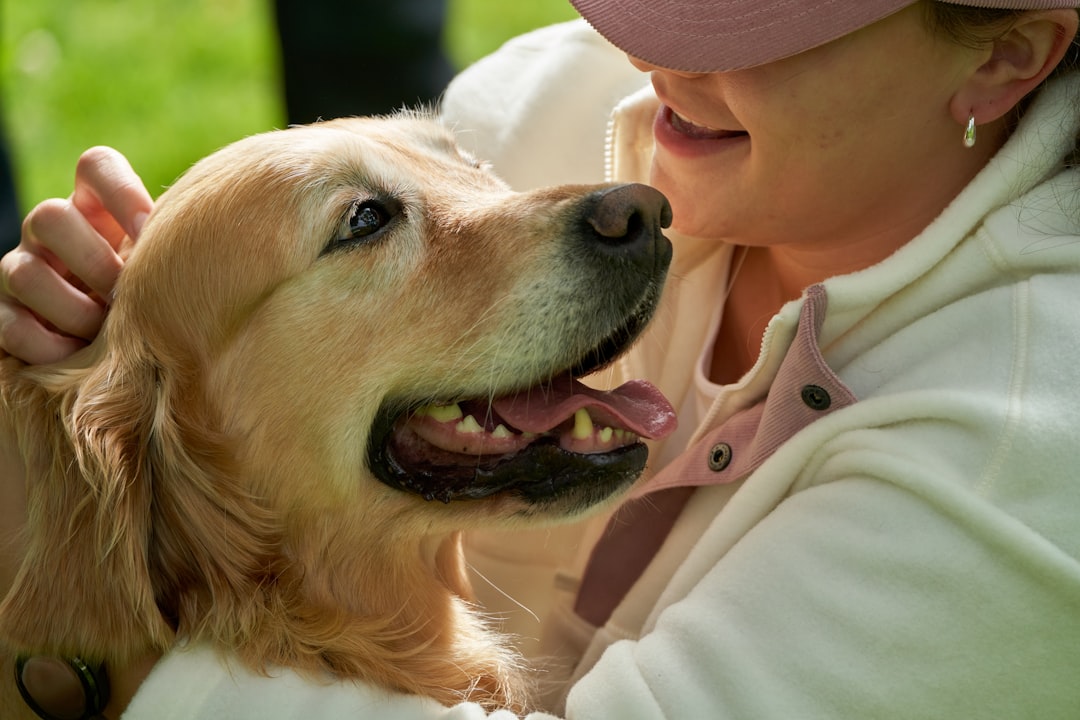Discover essential strategies for nurturing happier, healthier pets through comprehensive care that spans exercise, nutrition, grooming, emotional support, and safety.
Comprehensive Pet Care Guide: Essential Tips for Healthier, Happier Pets
Key Takeaways
- Regular exercise tailored to your pet’s species and needs promotes physical health and mental well-being.
- Weight management and diet control are crucial for preventing obesity-related diseases.
- Consistent grooming and dental hygiene support comfort and prevent systemic health issues.
- Routine veterinary care enables early disease detection and long-term wellness planning.
- Emotional stability, safety, and responsible ownership foster stronger bonds and happier pets.
- Technology and species-specific approaches enhance effective, modern pet care.
Table of Contents
- Introduction to Comprehensive Pet Care
- The Importance of Daily Exercise for Pets
- Weight Management and Obesity Prevention
- Grooming and Dental Hygiene
- Routine Preventive Veterinary Care
- Emotional Care for Your Pet
- Safety and Responsible Ownership
- Caring for Diverse Pets
- The Human Benefits of Pet Ownership
- Leveraging Technology for Smarter Pet Care
- Conclusion
- FAQ
1. Introduction to Comprehensive Pet Care
Welcoming a pet into your life is deeply rewarding and comes with important responsibilities beyond feeding and walks. Comprehensive pet care involves integrating daily routines, preventive healthcare, proper nutrition, grooming, emotional well-being, and catering to species-specific needs. By embracing a holistic approach, you enrich your pet’s life and strengthen the human-animal bond.
2. The Importance of Daily Exercise for Pets
Daily activity is fundamental to your pet’s physical and mental health. It improves mobility, supports cardiovascular function, controls weight, and enhances mood and cognition.
Exercise for Dogs
Dogs benefit from two daily walks of 20–30 minutes each, along with stimulating activities like fetch, swimming, tug-of-war, and agility training. Engaging puzzle toys and scent games help prevent boredom-related destructive behavior.
Exercise for Cats
Cats prefer short, intense play sessions two to three times a day, using toys that simulate prey. Provide climbing structures like cat trees and use puzzle feeders to encourage hunting instincts and mental stimulation.
Benefits of Regular Exercise
- Maintains healthy weight
- Strengthens heart and muscles
- Reduces anxiety and destructive behaviors
- Supports cognitive health and slows aging
3. Weight Management and Obesity Prevention
Obesity is a serious health risk, increasing the chance of diabetes, joint issues, and heart disease. Preventing excess weight through mindful care enhances quality of life and longevity.
Body Condition Scoring
Use body condition scoring to evaluate your pet’s physique by observing waistlines, rib visibility, and body shape rather than relying solely on the scale. This enables early detection of weight changes.
Diet and Feeding Tips
- Choose veterinarian-approved foods suited to your pet’s age and breed
- Serve controlled, precise portions and avoid overfeeding
- Limit treats to no more than 10% of daily calories
- Use scheduled mealtimes instead of free-feeding
4. Grooming and Dental Hygiene: Core Pets’ Health Habits
Grooming ensures comfort, cleanliness, and disease prevention, while dental hygiene prevents painful oral health problems that can affect overall wellness.
Grooming Practices for Dogs
- Brush regularly to avoid mats and reduce shedding
- Bath with pet-safe shampoos appropriate for coat and skin
- Trim nails monthly to prevent overgrowth
- Clean ears routinely, especially in breeds prone to infections
Grooming for Cats
Regular brushing reduces hairballs and mats, especially in long-haired cats. Occasionally bathe when needed, and keep nails trimmed with regular ear checks for health maintenance.
Preventive Dental Care
- Brush teeth daily using pet-specific tools
- Provide dental chews that combat plaque and tartar
- Use water additives to supplement oral care
- Schedule professional dental cleanings yearly with vets
5. Routine Preventive Veterinary Care for Longevity
Regular vet visits detect health issues early and develop personalized care plans to enhance your pet’s quality and length of life.
Essential Veterinary Practices
- Annual wellness exams including physicals and vaccination updates
- Customized vaccination schedules based on lifestyle and locale
- Year-round parasite prevention with recommended treatments
- Dental checkups integrated with veterinary visits
Early Detection and Disease Prevention
Monthly at-home exams help spot lumps, skin changes, or behavioral shifts early. Maintain communication with your veterinarian to adjust care as needed.
6. Emotional Care: Building Bonds and Stability for Your Pet
Emotional well-being is vital for balanced, happy pets. Consistency, affection, socialization, and stress reduction create a nurturing environment.
Creating Consistent Routines
Predictable schedules for feeding, activity, and rest reduce anxiety and help pets feel secure.
Affection and Socialization
Daily interaction through cuddling, play, and positive reinforcement strengthens emotional bonds. Gradual exposure to new experiences builds confidence and reduces fear.
Reducing Anxiety and Stress
Provide quiet retreat areas and maintain routines, especially during life changes, to minimize stress and promote resilience.
7. Safety and Responsible Ownership
Responsible ownership means planning your environment and choices to keep pets safe and secure.
Selecting the Right Pet
Choose a pet that fits your activity level, living conditions, and budget to ensure mutual happiness and manageable care.
Home Safety Measures
- Keep toxic foods and substances like chocolate, grapes, medications, and cleaners out of reach
- Secure unsafe zones with fencing or pet gates
- Remove small objects that pose choking hazards
Permanent Identification and Monitoring
Microchipping provides permanent ID; ensure your contact details stay updated. Utilize GPS collars and pet cameras for enhanced security and peace of mind.
8. Caring for Diverse Pets: Reptiles, Fish, and Small Mammals
Reptiles, fish, birds, and small mammals have specific environmental and dietary needs critical to their health.
Reptile Care
Replicate natural habitats with appropriate heat, UVB lighting, humidity, and hiding spaces. Wellness checks and parasite prevention are essential for longevity.
Fish Care
Maintain clean, stable water parameters including pH and temperature. Avoid overfeeding and provide enrichment like plants and shelters to reduce stress.
Small Mammals and Birds
Offer species-appropriate enrichment, balanced diets, and clean enclosures. Social interaction with humans or companions and regular vet visits promote well-being.
9. The Human Benefits of Pet Ownership
Pet ownership not only benefits animals but also enhances human health and social connections.
Reduced Stress and Improved Heart Health
Interacting with pets lowers cortisol levels and blood pressure. Activities like dog walking improve cardiovascular fitness.
Structured Routines and Social Connection
Pets establish daily rituals and foster social opportunities, helping reduce loneliness and increase happiness.
10. Leveraging Technology for Smarter Pet Care
Modern tools simplify and enhance pet care management.
Innovative Tools Include:
- Pet cameras for real-time monitoring and communication
- Smart feeders that dispense measured portions on schedule
- GPS collars for location tracking and activity monitoring
- Health apps offering reminders for vet visits, meds, and vaccines
Embracing these advances ensures steady, attentive care—even when away.
Conclusion: Crafting a Life of Wellness for Your Pet
True comprehensive pet care nurtures physical health, emotional security, and daily enrichment. With thoughtful routines, quality nutrition, love, and safety, you give your pet the foundation for a happy, healthy life. In turn, you receive unconditional loyalty, empathy, and joy. Leverage consistency and technology to become the best advocate your cherished companion could ask for.
*Explore premium accessories and smart tools at Petocart—where thoughtful care meets everyday convenience.*
Frequently Asked Questions
Q1: How much exercise does my pet need daily?
Exercise needs vary by species, breed, and age. Dogs commonly require two 20–30 minute walks, plus playtime, while cats benefit from several short play sessions daily. Tailor activities to your pet's personality and health.
Q2: What are effective ways to prevent obesity in pets?
Use body condition scoring to monitor weight, feed veterinarian-approved diets with accurate portion control, limit treats, and maintain consistent exercise routines.
Q3: How often should I take my pet to the vet?
Annual wellness exams are recommended, with more frequent visits if health issues arise. Vaccinations, dental checkups, and parasite prevention should be scheduled based on your vet’s guidance.
Q4: What grooming tasks can I do at home?
Regular brushing, nail trimming, ear cleaning, and dental care like tooth brushing can be performed at home. Use pet-safe products and consult your vet or groomer for best practices.
Q5: How can technology improve pet care?
Tech like pet cameras, smart feeders, GPS collars, and health management apps help monitor your pet’s well-being, provide structure, and alert you to care needs even from afar.








